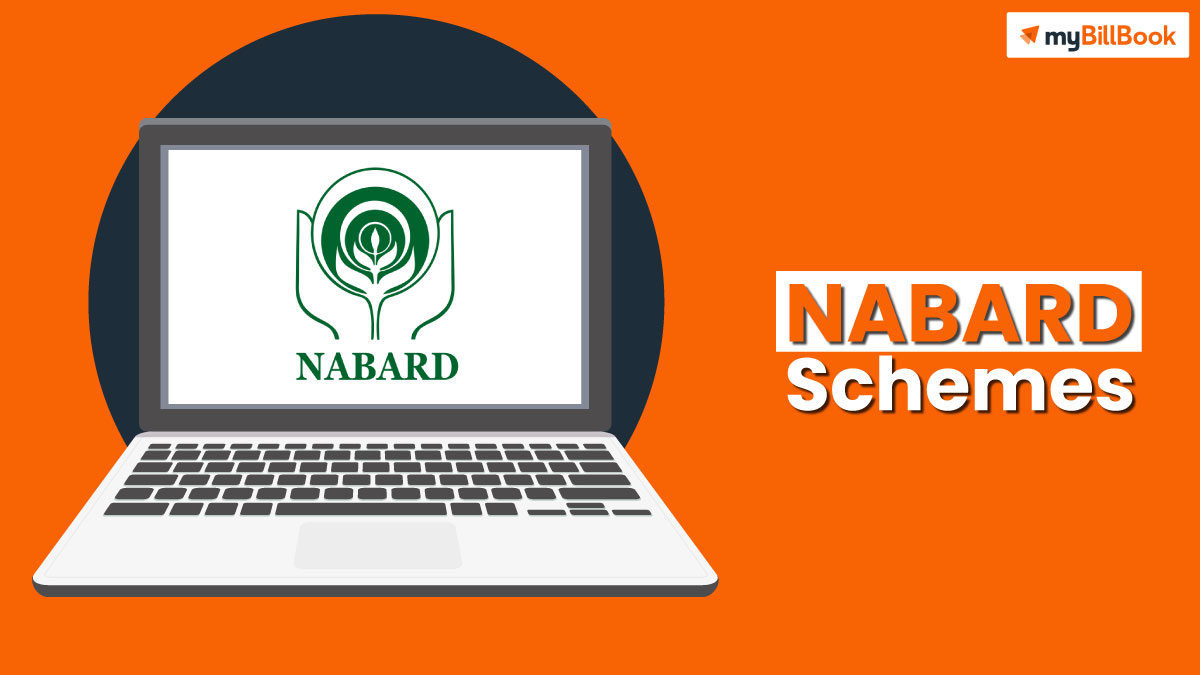As a development bank, NABARD is mandated to provide and regulate lending and other support facilities for agriculture, small-scale industries, cottage and village, craftsmanship, and other related rural economic activities to promote integrated rural development and secure rural prosperity, and formatted rural areas. This article will help you to know more about NABARD, Functions of NABARD & NABARD Schemes.
What is NABARD?
The National Agricultural and Rural Development Bank of India (NABARD) is the primary development bank in the country, with headquarters in Mumbai, the country’s financial hub. With offices strategically situated around the country dedicated to rural development, the Bank is tasked with the vital responsibility of formulating and implementing the government’s financial inclusion program. As a result, this leading rural development bank has joined with other financial institutes.
NABARD’s major mission is to give financial assistance to a number of sectors other than agriculture in order to facilitate village development in India by funding important economic activities. NABARD is responsible for conducting activities for agricultural research and rural development.
NABARD Formation and NABARD Chairman
The Indian government has recognized the critical role that institutional finance plays in the maintenance of rural economies since the beginning of its strategic planning process. The Reserve Bank of India (RBI) organized a committee to assess institutional lending arrangements for agriculture and rural development in response to a request from the Indian government (CRAFICARD). On March 30, 1979, Shri B. Sivaraman, a former member of India’s Planning Commission, established the Committee for the Promotion of National Integration.
NABARD was formed on July 12, 1982, by combining the RBI’s agricultural credit and Agricultural Refinance and Development Corporation’s refinance activities (ARDC). On November 5, 1982, late Prime Minister Smt. Indira Gandhi dedicated it to the country. Its paid-up capital was Rs.14,080 crore as of 31 March 2020. NABARD is now 100% owned by the Government of India due to a change in the share capital composition.
Dr. G.R. Chintala is the new Chairman of NABARD, with effect from 27 May 2020. He was previously the Managing Director of NABARD’s Bengaluru-based NABFINS.
Functions of NABARD
- Promotion & Development
This function aids the bank in promoting credit facilities in rural areas in order to assist the needy. NABARD is responsible for providing, regulating, and monitoring rural India’s loan flow. Additionally, it has numerous divisions that contribute to its development.
- Financing& Refinancing
These include extending term loans to client banks in rural areas to agriculturists, artisans, and handicraft enterprises.
- Planning
NABARD assists other rural banks in developing their action plans through these functions. Additionally, it benefits both the agricultural and non-agricultural sectors.
- Monitoring & Supervision
It encompasses all of the organization’s responsibilities for supervising all other banks, credit and non-credit societies, and so forth.
Types of Nabard Loan
Short Term Loans
These are crop-specific NABARD loans made available to farmers through a range of financial institutions with the objective of refinancing agricultural production. This financing ensures food security for farmers and rural communities. When agricultural operations are seasonal, the NABARD plan sanctioned 55,000 crores in short-term credit loans to a variety of financial institutions in FY17–18.
Long Term Loans
Numerous financial organizations offer these loans for agricultural or non-agricultural purposes. Their duration is significantly longer than that of short-term loans, ranging from 18 months to a maximum of five years. As of FY17–18, NABARD had refinanced financial institutions to the tune of around 65,240 crores, which includes any concessional refinancing of 15,000 crores to Indian Regional Rural Banks (RRBs) and Cooperative Banks.
Some of the GOVT. Sponsored Schemes available under NABARD are as follows;
- Farm Sector
- Dairy Entrepreneurship Development Scheme
- Capital Investment Subsidy Scheme for Commercial Production Units for organic/ biological Inputs
- Agriclinic and Agribusiness Centres Scheme
- National Livestock Mission
- GSS – Ensuring End Use of Subsidy Released
- Interest Subvention Scheme
- New Agricultural Marketing Infrastructure
- Formulation of Special Long Term Refinance Schemes
- Off-Farm Sector
- Credit Linked Capital Subsidy Scheme
- NRLM / NULM (Deendayal Antyodaya Yojana)
- Weavers Package
The many systems that have been developed over the years have been classified into unique and compact schemes. The following is the categorization:
- Composite Loan Scheme (CLS)
- Integrated Loan Scheme (ILS)
- Self-Employment Scheme for Ex-servicemen (SEMFEX)
- Soft Loan Assistance for Margin Money (SLAMM)
- Small Road and Water Transport Operators (SRWTO)
- Rural Housing
- Renewable Energy
These are some of the loans that come under these Government schemes;
- RIDF or ‘Rural Infrastructure Development Fund’
The RBI established the Rural Infrastructure Development Fund in response to a credit deficit in the priority sector for rural infrastructure projects. This fund’s primary purpose is the development of rural infrastructure in India, and it disbursed Rs. 24,993 crore in the fiscal year 2017-18.
- LTIF or ‘Long-Term Irrigation Fund’
This was created as part of the NABARD credit program to provide funding for a total of 99 irrigation projects through the disbursement of 20,000 crores in loans.
- PMAY-G or ‘Pradhan Mantri Awaas Yojana -Grameen’
NRIDA, or the ‘National Rural Infrastructure Development Agency,’ was granted a loan of 9000 crores under this financial scheme in order to carry out its goal of constructing pukka dwellings with all needed amenities for needy people by 2022.
- NIDA or ‘NABARD Infrastructure Development Assistance
NIDA is a subsidiary initiative of the NABARD program. It specializes in giving credit to financially sound organizations and state-owned corporations. As a result, NABARD also uses this program to refinance non-private projects.
- Warehouse Infrastructure Fund
Warehouse Infrastructure Fund assists in scientific infrastructure for agricultural commodities warehousing. NABARD initially provided a loan of Rs. 5000 in the fiscal year 2013–14. As of March 31, 2018, the total amount disbursed was Rs. 4778 crore.
- Food Processing Fund
The Indian government has committed a loan commitment of 541 crores to 11 large-scale food park projects, one integrated food park project, and three rural food processing units in India under NABARD’s food processing fund.
- Direct Lending to Cooperative Banks
NABARD has sanctioned Rs 4,849 crore in assistance to 58 Co-operative Commercial Banks (CCBs) and four State Cooperative Banks (StCBs) spread across 14 states.
- CFF or ‘Credit Facility to Marketing Federations’
This NABARD loan program encourages agricultural marketing by financially boosting marketing federations. As of 2018, such federations had received a total of 25,436 crores.
- PACS or ‘Primary Agriculture Credit Societies’
Additionally, NABARD has established a one-of-a-kind ‘Producer Organizations Development Fund,’ or PODF for short. The objective is to provide financial support to PACS that operate primarily as ‘Multi Service’.
FAQs about NABARD
- What is the full form of NABARD?
National Bank for Agriculture and Rural Development.
- Who is eligible to apply for a NABARD loan?
NABARD does not offer direct loans; nevertheless, to qualify for a subsidy under the NABARD scheme, you must apply for a business loan with a commercial or cooperative bank.
- What are the banks and non-bank financial companies (NBFCs) that fall under the purview of NABARD?
Under the NABARD scheme, the following banking entities are eligible to make loans or subsidies:
- Regional Rural Banks (RRBs)
- Co-operative Banks
- Private and Public Sector Banks







